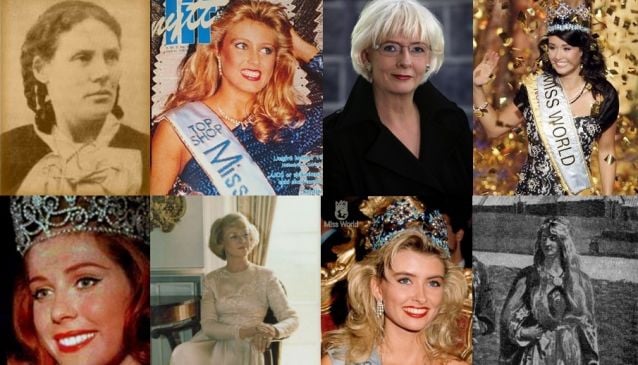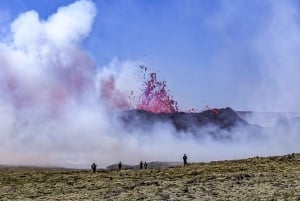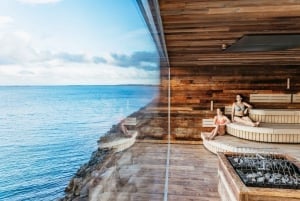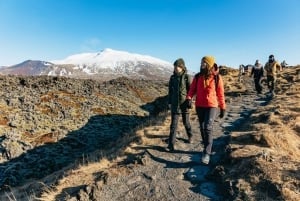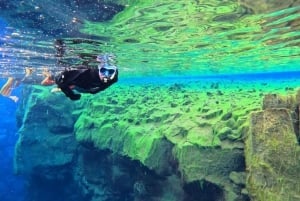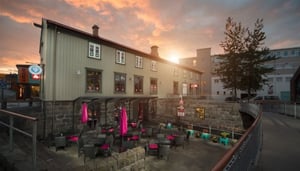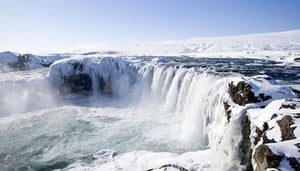Icelandic Women
Icelandic women have a mixed reputation of traditional femininity and incredible progressiveness...
Book Top Experiences and Tours in Reykjavik:
If youʻre booking your trip to Reykjavik last minute, we have you covered. Below are some of the top tours and experiences!- From Reykjavík: Volcanoes and Blue Lagoon Day Trip
- Reykjavik: Sky Lagoon Admission with Transfer
- From Reykjavik: Snæfellsnes Peninsula Full-Day Tour
- Reykjavik: Guided Tour to Volcano and Reykjanes Geopark
- Reykjavik: Roundtrip Bus Transfer to the Blue Lagoon
Iceland has a kind of conflicted reputation when it comes to women. On the one hand, Iceland enjoys one of the most equal societies in the world (though by no means completely equal), and it has historically been pretty progressive when it comes to women's rights.
On the other hand, Icelandic women have also been lauded as âthe most beautiful women in the worldâ and rumoured to be âliberalâ in the bedroom, as well as in the voting booth, which traditionally doesn't exactly make you think of a strong and independent woman.
The country has had the first democratically elected female head of state, the first openly lesbian prime minister, as well as four international beauty queens. Where does such a diverse image of Icelandic femininity come from? Let's take a walk through Icelandic women's history in search of our answer.
1. Auður the Deep-Minded, Hallgerður âLongpantsâ, the Settlement and Viking women's rights.
Viking age Icelandic society, though brutal, was remarkably progressive for its time. Under Icelandic law both rape and attempted rape were punishable by outlawry (which would probably result in death) and Icelandic women could divorce their husbands if they wanted to. Finally, women were by law able to settle as much land as they could lead a heifer around in a day. The Book of Settlements mentions several women settling land in Iceland, among them Auður Djúpúðga (âthe Deep-Mindedâ). She sailed to Iceland on her own initiative with 30 free men under her command and settled the entire area of Breiðafjörður in the west of Iceland.
In these early days, progressive as they were by the standard of their time, a woman was still under a man's authority (her husband's or her father's) and her value was very much in her physical beauty. This can be plainly seen in the Icelandic Sagas, for instance in the Saga of Njal, which dutifully reports on how gorgeous Hallgerður Langbrók (âLongpantsâ or âLonglegsâ) is, how tall she is and how beautiful her hair is. When Gunnar, the hero of the story, lays eyes on her long pants and long hair, he immediately falls in love and must marry her, despite her... less admirable personal qualities (meaning her betrayal causes a split with his best friends and -SPOILER ALERT- ultimately gets him killed. Just like her previous two husbands).
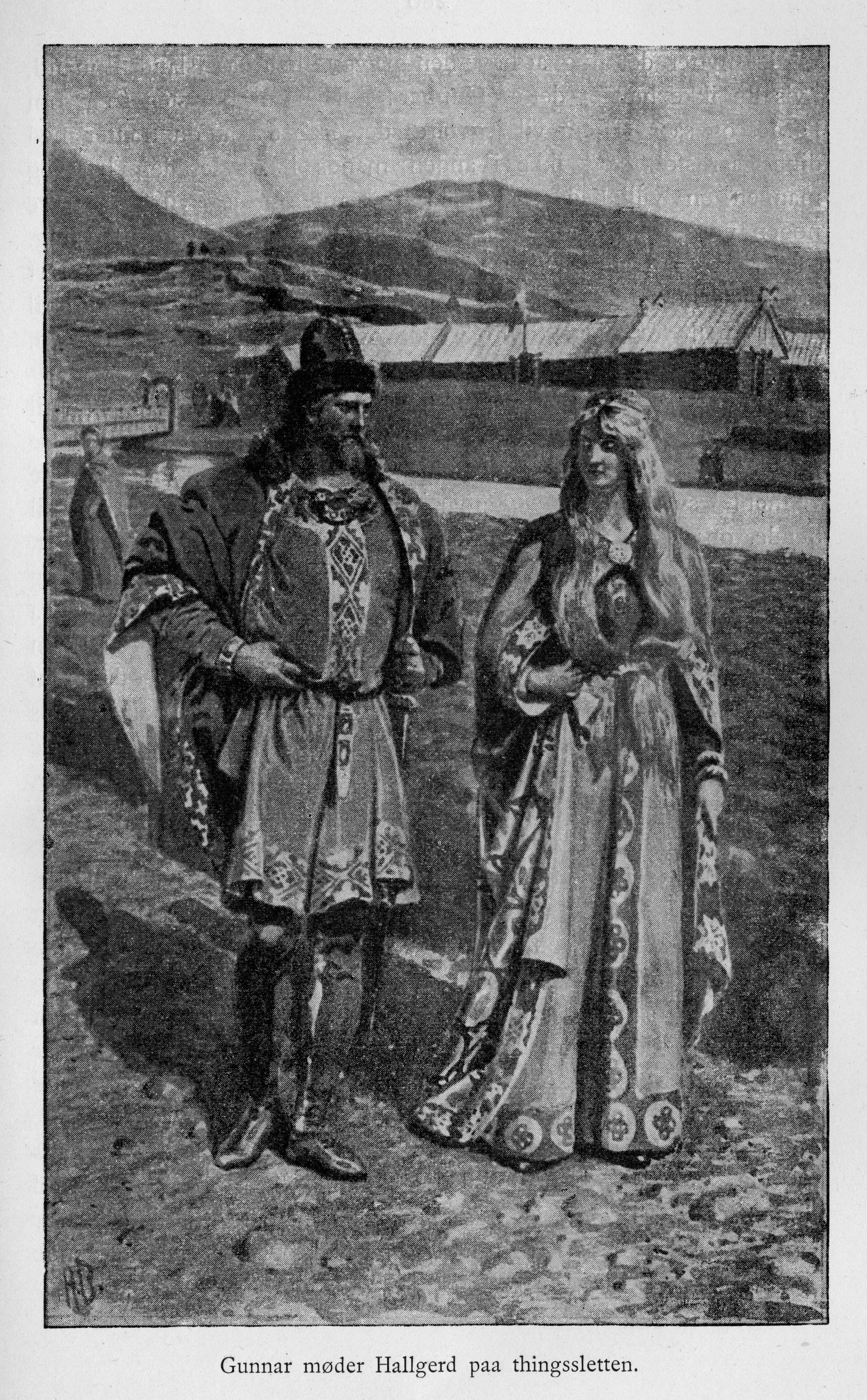
Gunnar putting the moves on Hallgerður.
2. BrÃet Bjarnhéðinsdóttir and women's suffrage
Between the Viking age and the modern age, Iceland was under the Norwegian and then the Danish crown for a short several centuries. In that time women's rights were more or less similar to continental currents. There were several early attempts to legislate for women's suffrage in the 19th century, but they were always vetoed by the Danish crown because the traditional autocrat was shockingly opposed to social progress.
At the start of industrialisation and urbanisation in the 20th century, women's associations started cropping up all around the country, but they seemed mostly happy with performing their traditional gender roles, educating their members on housekeeping and cooking, collectively buying knitting machines and taking care of the poor and elderly.
In 1907 BrÃet Bjarnhéðinsdóttir founded the first Icelandic Women's Rights Association, with the encouragement of Carrie Chapman Catt, the leader of the International Alliance of Women. The efforts of BrÃet and other womenâs suffrage campaigners led to Icelandic women gaining the right to vote in 1915 â among the first in the world. Womenâs voting right was initially confined to those over 40 but the age restriction was dropped in 1920. In 1922 the first all-women's political party was formed, receiving 22% of the vote, which then won several victories for women's rights.

Briet on the left, making a statement that if you can change the gender politics of an entire country while wearing a curtain on your head, you are seriously bad-ass.
3. Heads of state and beauty queens
Throughout the 20th century the feminist movement made steady progress toward gender equality resulting in today one of the most equal societies in the world. A huge victory for women was won in 1980, when VigdÃs Finnbogadóttir became the world's first democratically elected female head of state. The fact that she could accomplish this despite being a divorced single mother may be indicative of a cultural relaxedness in Iceland, since in the 20th century, single parenthood was taken for granted by most. In the same period Jóhanna Sigurðardóttir was a member of parliament, eventually becoming world's first openly lesbian head of government in the wake of the financial crash in 2009.


VigdÃs Finnbogadóttir, president. Jóhanna Sigurðardóttir, prime minister.
Other prominent 20th century Icelandic women include Guðrún Bjarnadóttir (Miss International in 1963), HólmfrÃður Karlsdóttir, Linda Pétursdóttir and Unnur Birna Vilhjálmsdóttir (Miss World in 1985, 1988 and 2005, respectively). This is probably where the rumours of Icelandic women's beauty originate, and to be fair it's pretty impressive for a nation of less than a half a million to win international beauty contests four times in five decades. Whether or not the women of Iceland are indeed prettier than other nations', judge for yourself. According to a traditional standard of beauty, Icelandic women (and men) probably measure up pretty comfortably, since Icelanders are on average fairly tall, blue eyed, and rather blonde-ish. But beauty is in the eye of the beholder, and two of those beauty queens weren't even blondes.

Though traditional feminism condemns this kind of objectification and beauty worship, a common complaint from less traditional feminists is âif women want to compete in beauty, shouldnât they be allowed to?â - and in the end that is probably the resolution of the seeming contradiction: Icelandic women do what they want.
If they want to settle land and divorce their husbands, they will, all while tossing about their incredible Viking hair and looking absolutely fabulous. If they want to be prime minister, guess what, they're going to be prime minister. And if they want to compete to be the prettiest girl in the world, that's what they're gonna do. And come to think of it, isn't that what feminism is all about? Isn't that what the recent phenomenon of the âslut walkâ is about? A woman's right to dress how she pleases and do as she pleases without being shamed or abused? If an Icelandic woman wants to sleep with a man, she will. If she wants to punch him in the face for being a creep, he'll be crouching on the floor trying to pick up his front teeth and the shattered remains of his pride before the night is out. It depends on whether she wants to. So if you're a man coming to Iceland to try to pick up girls: just remember that no means no, and tread carefully.
We are, after all, a Viking nation.


